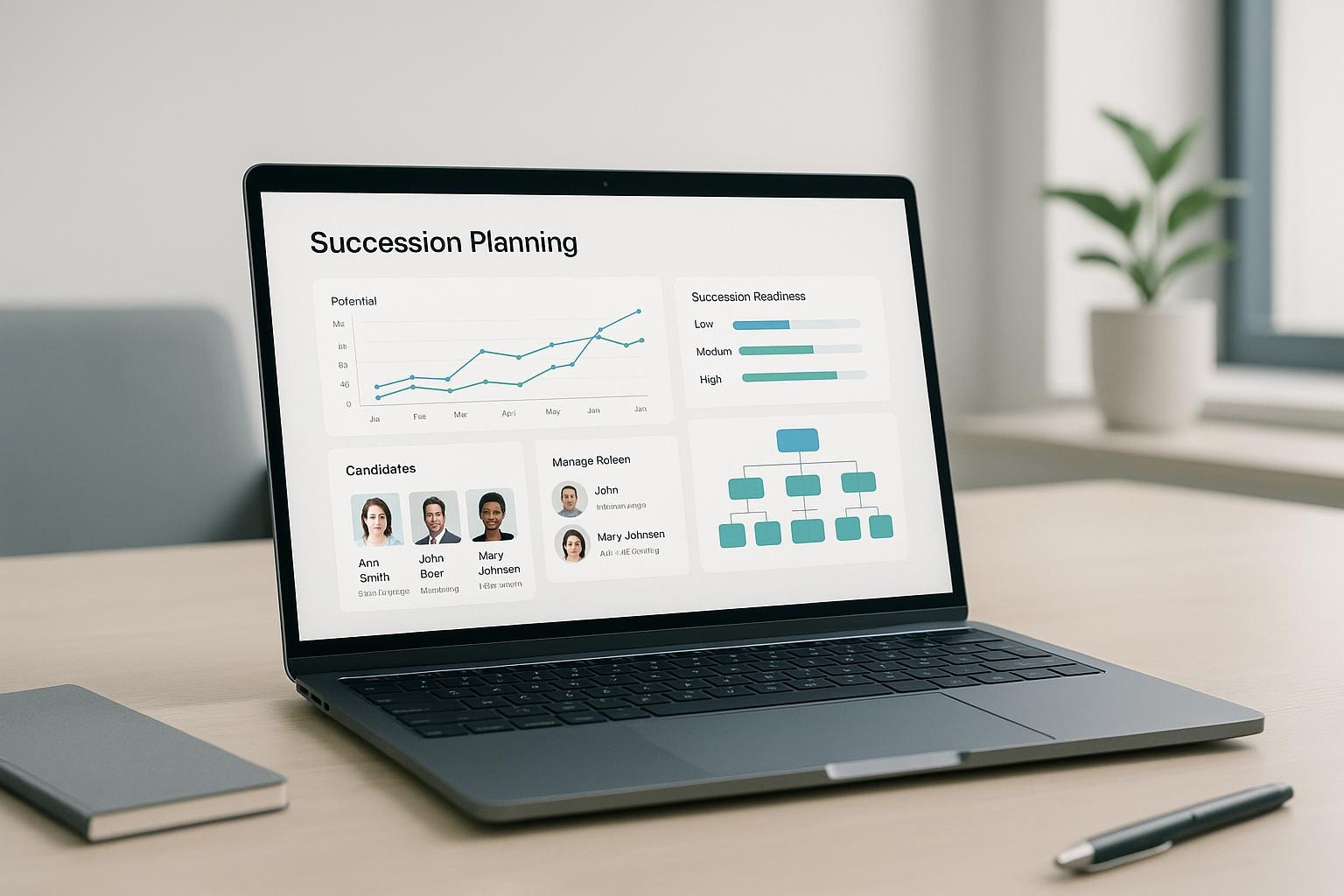
Top 7 Tools for Predictive Succession Planning
Compare AI-powered platforms that help you identify future leaders and cut turnover by 37% while boosting financial performance by 11% annually.

Written by
Adam Stewart
Key Points
- Choose tools that connect with your existing HR systems
- Look for platforms with predictive analytics on leadership potential
- Pick solutions with proven ROI of $4.70 per development dollar
- Select tools that automate talent pipeline tracking and gap analysis
Predictive succession planning is reshaping how businesses prepare for leadership transitions. Instead of outdated methods like spreadsheets or gut instincts, companies now rely on AI-powered tools that analyze skills, performance, and career goals to identify future leaders. These tools help businesses reduce leadership gaps, improve employee retention, and make data-informed decisions.
Here’s a quick look at seven tools that stand out:
- ChartHop: Visual dashboards for workforce dynamics and succession scenarios.
- UKG Pro: AI-driven analytics for turnover prediction and readiness insights.
- SAP SuccessFactors: Global talent management with advanced analytics.
- Cornerstone OnDemand: Links succession planning with training to address skill gaps.
- Workday Succession Planning: Predictive analytics for leadership forecasting.
- Empxtrack: Detailed readiness mapping for complex organizational structures.
- DDI: Leadership-focused, competency-based planning.
These tools integrate with existing HR systems, offer predictive insights, and cater to businesses of all sizes. Whether you're a small company or a multinational enterprise, choosing the right tool can ensure smoother leadership transitions and long-term success.
Quick Comparison:
| Tool | Key Feature | Best For | Pricing Model |
|---|---|---|---|
| ChartHop | Interactive dashboards | Mid-sized companies | Custom pricing |
| UKG Pro | AI-driven turnover prediction | Unified workforce insights | Tiered pricing |
| SAP SuccessFactors | Advanced analytics for enterprises | Large/global organizations | Enterprise licensing |
| Cornerstone OnDemand | Training and skill gap integration | Growing organizations | Per-user pricing |
| Workday | Leadership forecasting | Mid-sized to large businesses | Enterprise pricing |
| Empxtrack | Readiness mapping | Complex hierarchies | Mid-market pricing |
| DDI | Competency-based modeling | Leadership development focus | Consulting-based |
Choose a tool that aligns with your organization's size, budget, and leadership goals.
How to Choose the Right Predictive Succession Planning Tool
Selecting the right tool is critical for leadership development. According to Deloitte, while 86% of leaders recognize succession planning as a priority, only 14% believe they excel at it. The challenge lies in finding a solution tailored to your organization's needs, budget, and growth path.
For small and medium-sized businesses (SMBs), the stakes are even higher. Unlike large corporations with dedicated HR teams and deep pockets, SMBs need tools that provide immediate value while being cost-effective and simple to implement.
Data Analysis and Prediction Features
The core of any predictive succession planning tool is its ability to transform raw data into actionable insights. Data-driven approaches have been shown to double top talent retention, making this a key factor in your decision.
Look for tools that can analyze multiple data points at once. The best platforms combine information from performance reviews, turnover trends, skills, and career goals to create detailed talent profiles. This helps identify high-potential employees who might otherwise go unnoticed and predict who may be at risk of leaving.
Data quality is equally important - poor-quality data can lead to unreliable insights. Choose tools capable of cleaning and standardizing your existing HR data while flagging inconsistencies. The ideal platform should blend data analysis with human judgment, offering guidance rather than making decisions for you.
Key features to prioritize include:
- Talent identification and assessment tools
- Progress tracking for development programs
- Knowledge transfer mechanisms
- Performance metrics monitoring
Additionally, the tool should support collaboration among stakeholders and allow for regular updates to keep your plans relevant. Start by reviewing your HR data - such as performance reviews, training records, and exit interviews - to identify gaps and understand what needs improvement.
Once your analytics are in place, seamless integration with other systems becomes essential to maintain up-to-date insights.
System Integration Options
Integration can make or break the effectiveness of your succession planning tool. According to SHRM, 70% of large companies already use some form of HR analytics, and the most successful implementations involve tools that work seamlessly with existing systems.
The ideal platform should integrate with your HRIS, ATS, and LMS, creating a unified view of employee performance, potential, and development progress. This reduces manual data entry, minimizes errors, and ensures that your succession plans remain up-to-date with real-time information.
Pay special attention to compatibility with your performance management system. Access to ongoing performance data provides a comprehensive view, making it easier to align leadership development with broader workforce strategies. If your organization uses a Learning Management System, ensure the tool can integrate for skill gap analysis and development planning, allowing you to identify training needs and track progress automatically.
Beyond technical integration, it’s also important to evaluate cost and scalability.
Cost and Growth Flexibility
Sustainable succession planning requires tools that balance affordability with adaptability. The cost of succession planning tools can range from $5,000 to $100,000 annually, but the benefits - such as improved retention and performance - often outweigh the expense.
Consider both software and service costs, including consulting, training, and ongoing support. Many SMBs underestimate implementation expenses, which can significantly affect the total cost of ownership.
Companies with effective succession planning see financial performance improve by over 11% annually. Additionally, well-structured plans are linked to a 37% reduction in turnover rates, and every dollar spent on employee development typically yields an average return of $4.70.
Scalability is another critical factor as your business grows. The global market for succession and leadership planning software is projected to grow from $1.8 billion in 2023 to $4.5 billion by 2032, driven by increased adoption among SMBs that recognize the value of structured leadership development.
When evaluating options, focus on user-friendliness, scalability, and integration capabilities rather than flashy features you may not use. Piloting a tool can help reduce risk and demonstrate its value.
Cloud-based solutions are particularly appealing for their scalability and lower upfront costs. They offer automatic updates and the flexibility to adjust as your organization evolves, making them a smart choice for growing businesses with changing needs.
Top 7 Tools for Predictive Succession Planning
Here’s a closer look at seven tools that stand out in the world of predictive succession planning, offering a range of features to help organizations prepare for future talent needs.
ChartHop
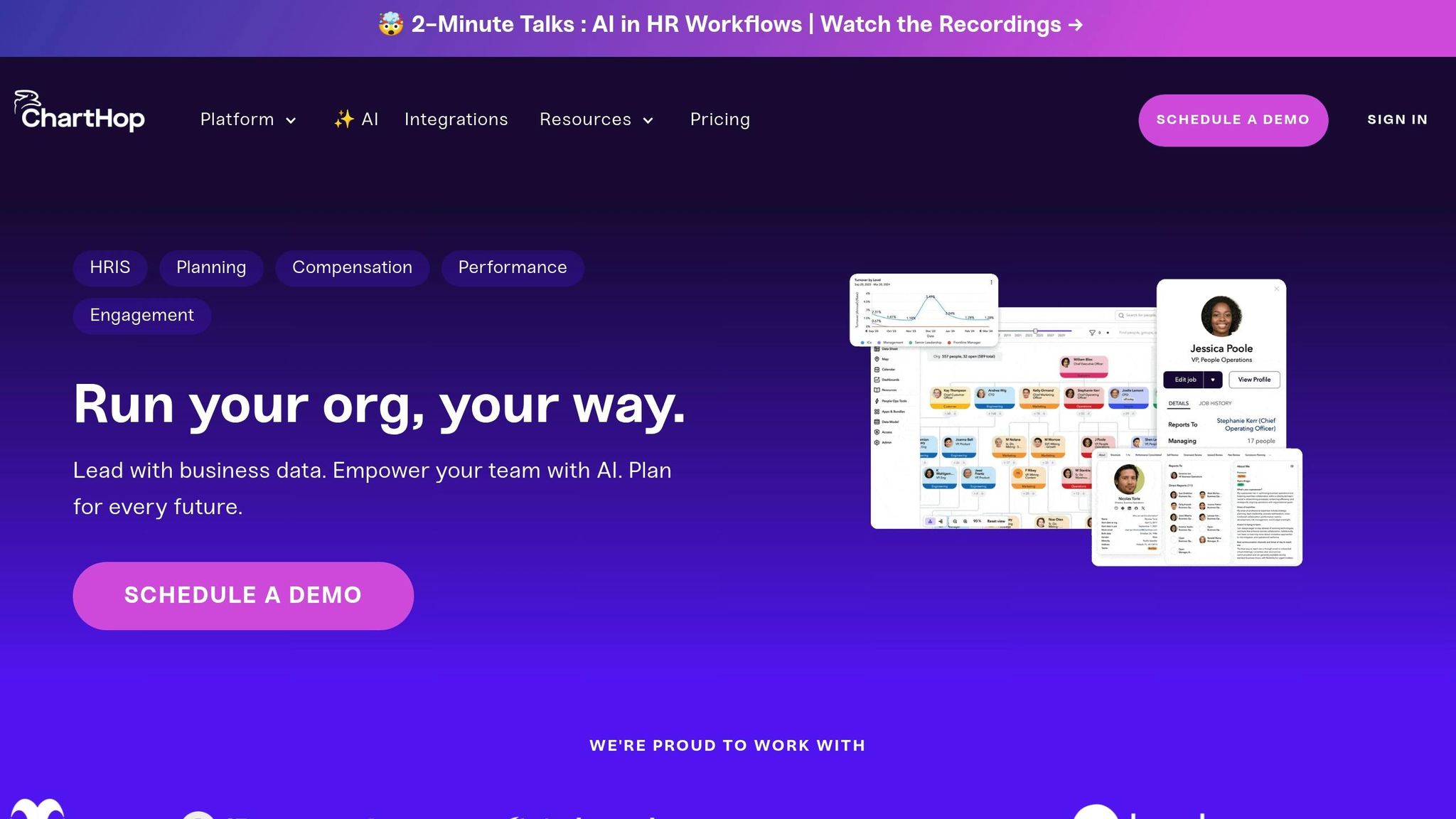
ChartHop transforms HR data into interactive dashboards, providing a clear view of workforce dynamics. Unlike static diagrams, it incorporates performance metrics, compensation details, and readiness for succession. The platform integrates seamlessly with HR, payroll, and applicant tracking systems, making it a great fit for mid-sized companies. With its visual approach, HR teams can quickly identify talent gaps and explore succession scenarios, enabling faster decisions about talent moves and development strategies.
UKG Pro
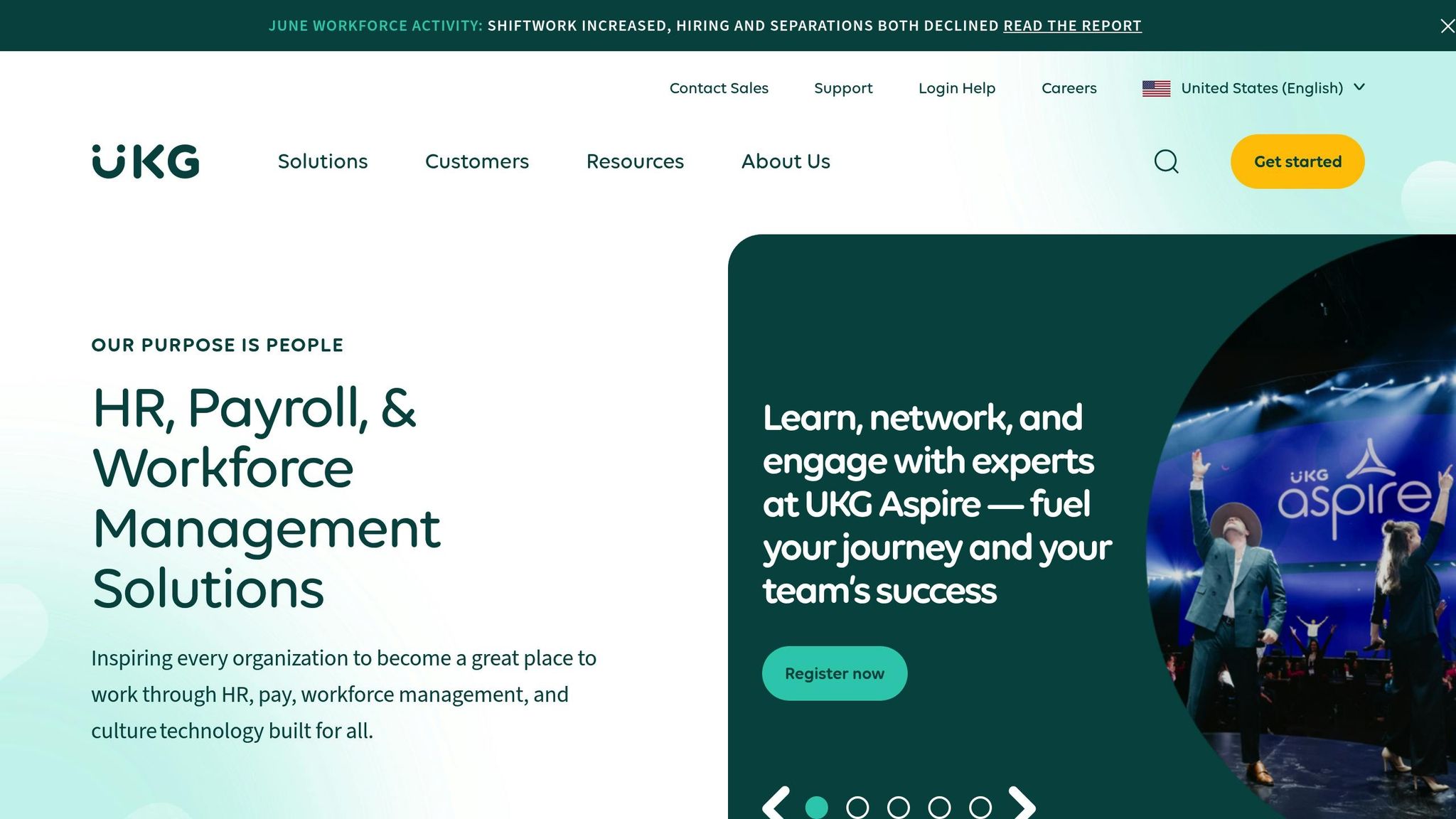
UKG Pro uses AI-driven analytics to deliver insights for succession planning. By centralizing payroll, benefits, and workforce data, it offers a unified view that improves predictions about succession readiness. The platform supports career development initiatives to prepare future leaders. For example, TravelBrands reported saving $150,000 in its first year with UKG Pro, reducing manual processes by 50% and cutting employee turnover by 10%.
SAP SuccessFactors Succession & Development
SAP SuccessFactors provides a global solution for talent management, making it ideal for large enterprises with complex needs. It helps organizations attract, retain, and develop talent throughout the employee lifecycle. The platform integrates with other SAP tools, offering advanced analytics and personalized employee experiences through AI. Its user-friendly interface and connected modules make it a top choice for multinational corporations.
Cornerstone OnDemand
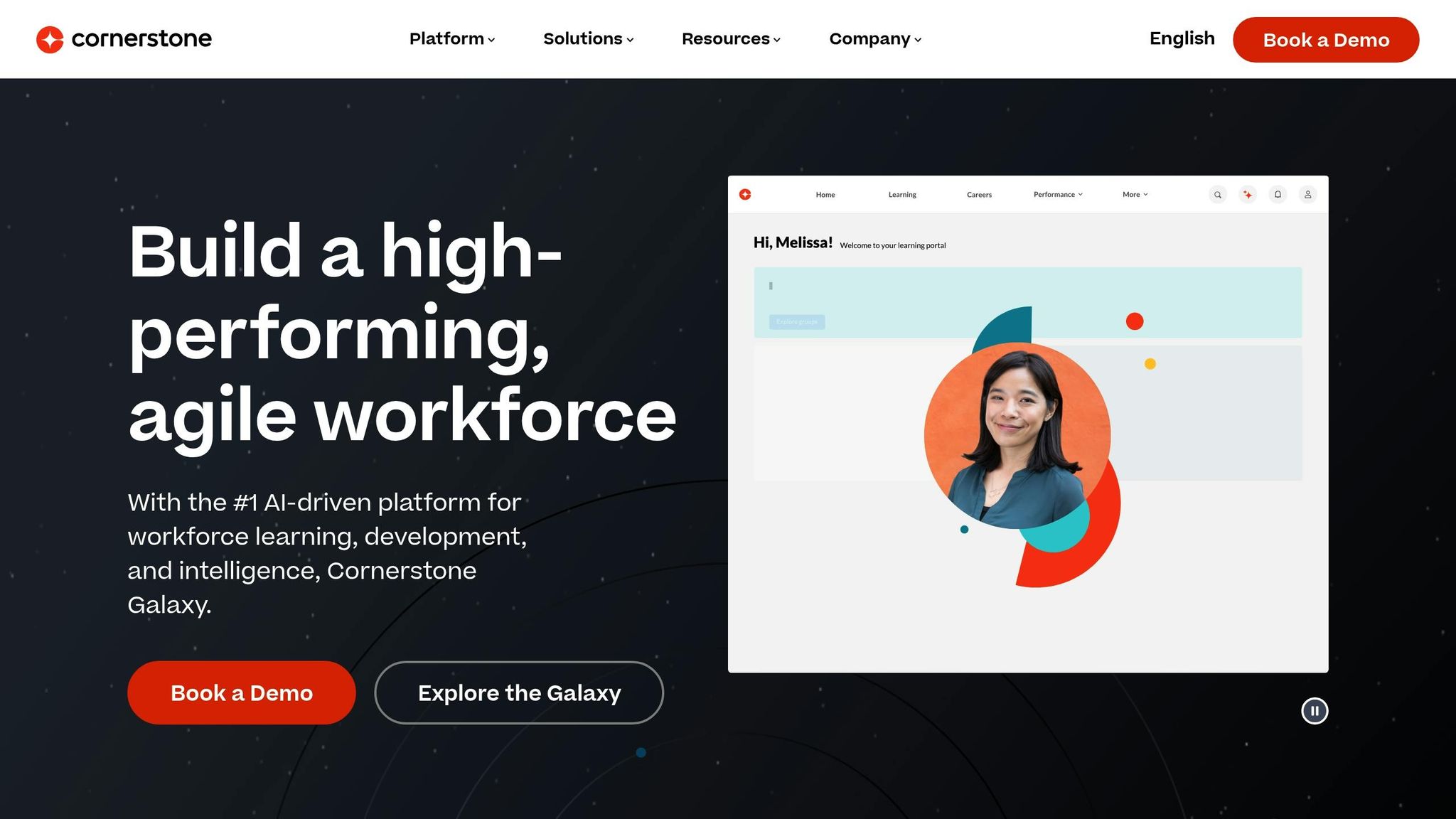
Cornerstone OnDemand combines visual succession planning with learning and development tools. The platform links succession strategies directly to training programs, addressing skill gaps and preparing potential successors. Known for its intuitive design, it allows administrators and employees to navigate easily. Its flexibility makes it suitable for organizations looking for scalable solutions tailored to their growth.
Workday Succession Planning
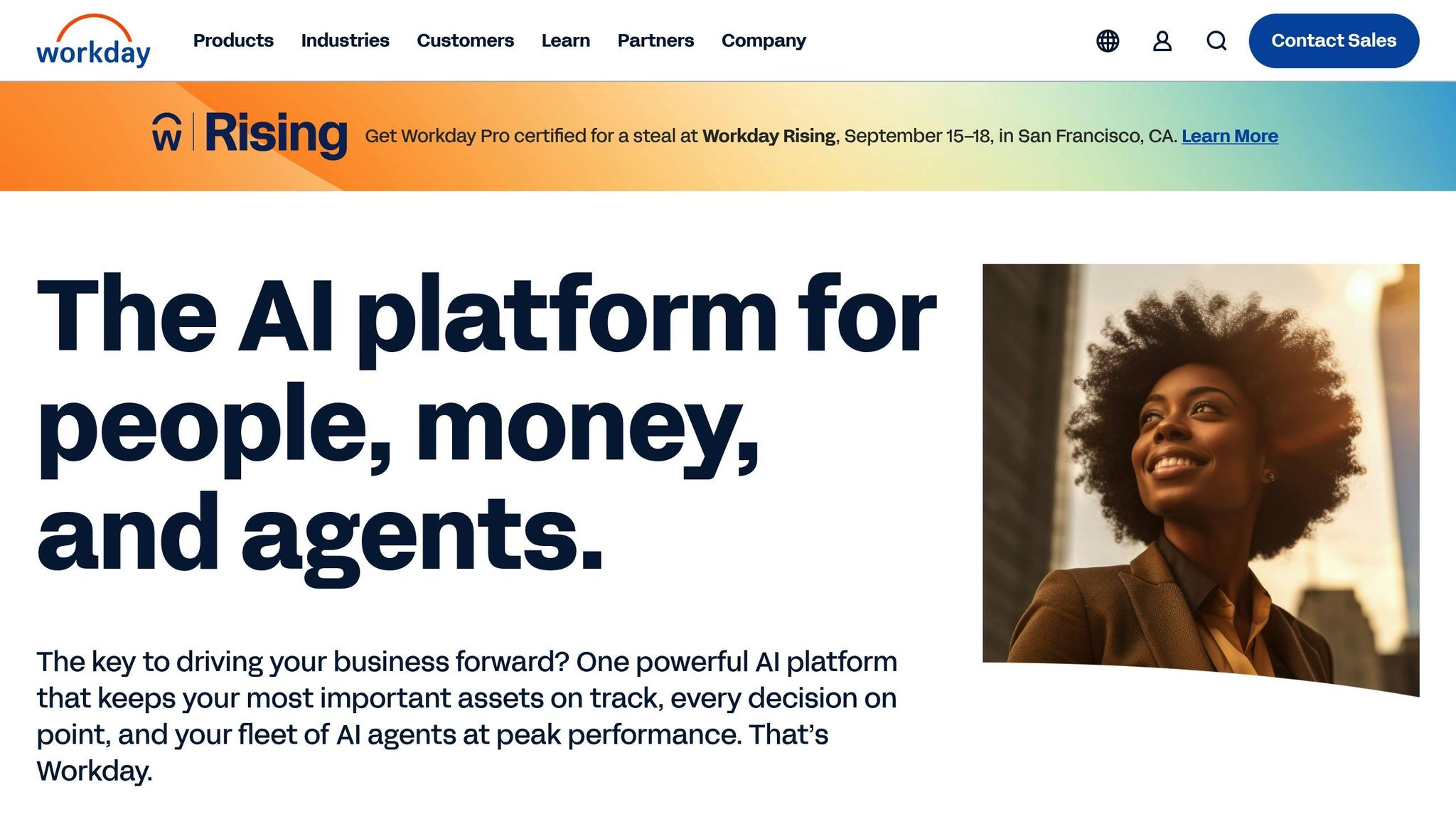
Part of the broader Workday Human Capital Management platform, this tool incorporates predictive analytics to streamline succession planning. With configurable dashboards and integration options, Workday enables organizations to forecast leadership needs and identify high-potential employees. It’s particularly effective for mid-sized and large enterprises, offering insights based on historical data and performance trends.
Empxtrack
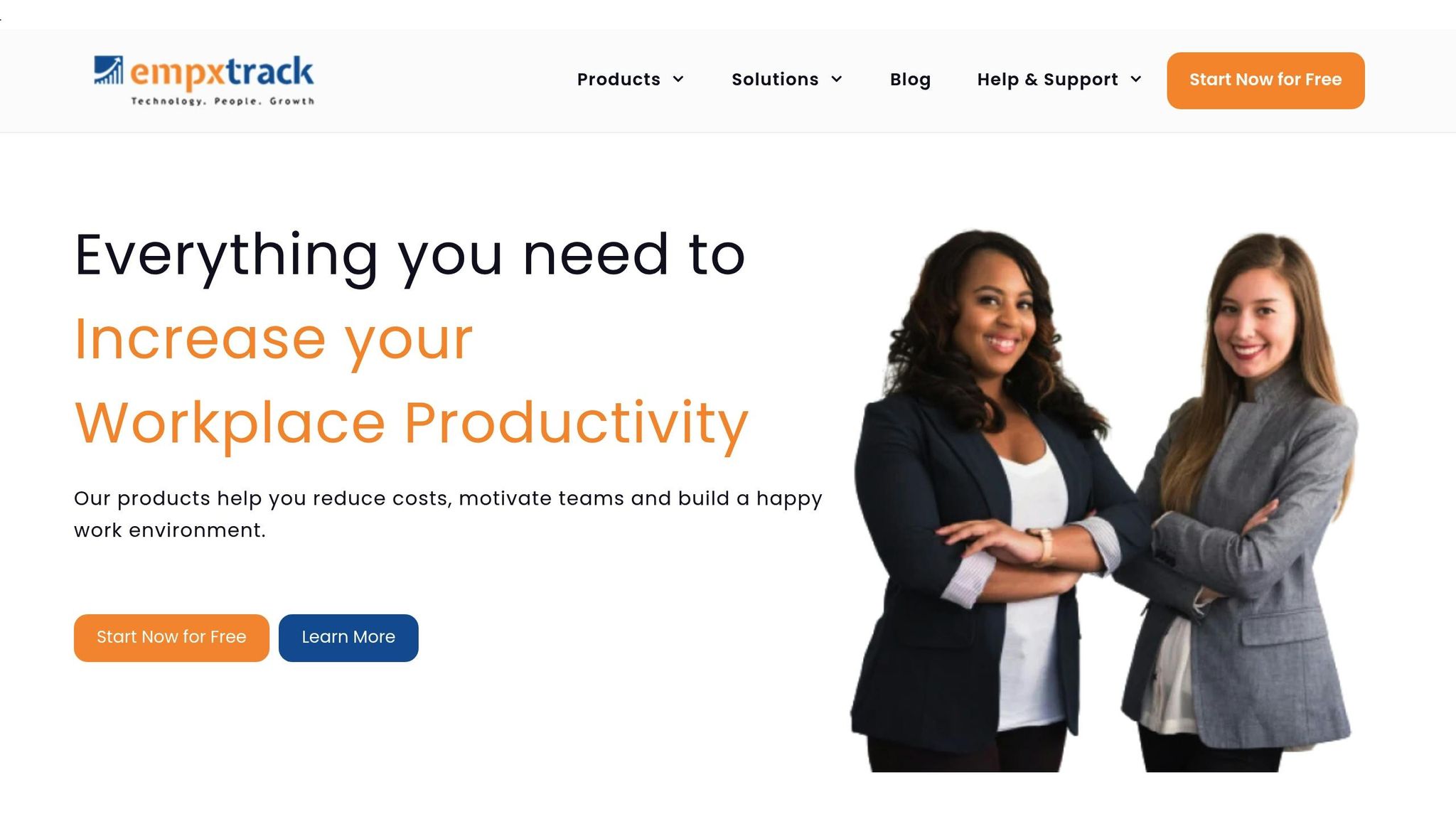
Empxtrack is designed for organizations with intricate hierarchies. It provides detailed mappings of succession readiness and performance levels, helping plan for immediate, short-term, and long-term needs. The tool requires competency mapping and structured approval workflows, making it a strong option for businesses with complex structures.
DDI (Development Dimensions International)
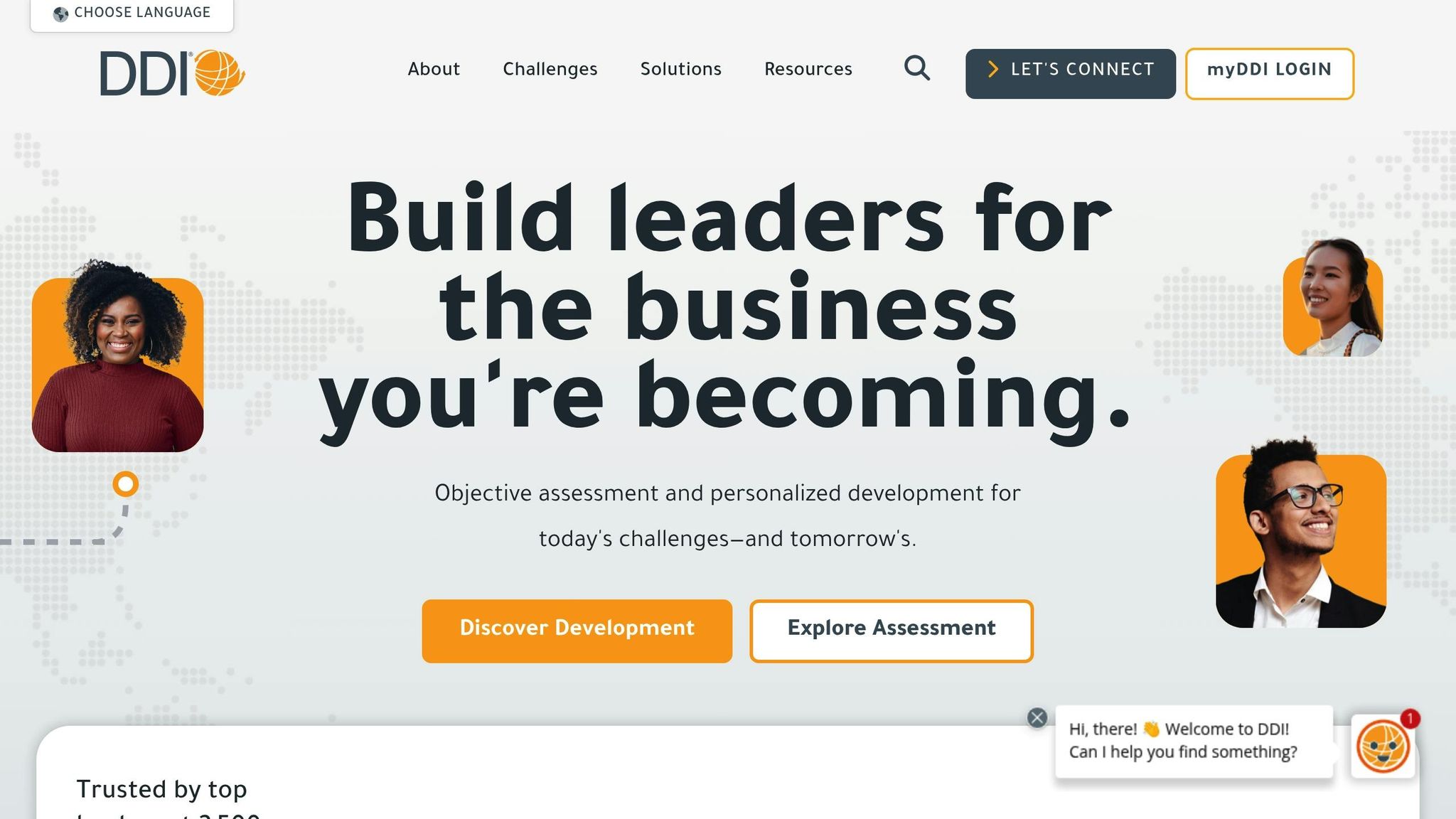
DDI specializes in leadership competency modeling for succession planning. By focusing on data-driven, competency-based models, it ensures objective and unbiased promotion decisions. This approach is especially valuable for organizations that prioritize rigorous leadership development.
With more than 70% of companies using people analytics to improve performance, these tools offer effective ways to implement predictive succession planning across various industries. Below is a comparison of their features and pricing for a clearer perspective.
sbb-itb-ef0082b
Feature and Price Comparison Table
When choosing the right tool, comparing features, pricing, and functionality is key. Each tool offers a distinct focus - some prioritize AI-powered analytics, while others excel in competency mapping or development planning.
| Tool | Predictive Analytics Strength | Integration Options | Pricing Model | Special Features |
|---|---|---|---|---|
| ChartHop | Interactive dashboards with performance metrics | HR, payroll, and ATS systems | Custom pricing | Visual workforce mapping and real-time succession scenarios |
| UKG Pro | AI-driven analytics with a unified data view | Payroll, benefits, and workforce systems | Tiered pricing | Turnover prediction |
| SAP SuccessFactors | Advanced AI analytics for global enterprises | Full SAP ecosystem integration | Enterprise licensing | Multinational support and personalized employee experiences |
| Cornerstone OnDemand | Visual succession planning with learning analytics | Learning management systems | Per-user pricing | Direct training integration and skill gap analysis |
| Workday Succession Planning | Predictive analytics with configurable dashboards | Workday HCM platform | Enterprise pricing | Historical data forecasting and high-potential identification |
| Empxtrack | Precise mappings of readiness and performance | Complex hierarchy systems | Mid-market pricing | Structured workflows and multilayer planning |
| DDI | Competency-based predictive modeling | Leadership development platforms | Consulting-based pricing | Objective promotion decisions and leadership competency focus |
This table provides a quick snapshot for decision-makers, complementing earlier discussions.
Key Takeaways from the Comparison
The pricing structure of these tools reflects their target markets and feature sets. For example, SAP SuccessFactors is tailored for large enterprises with its seamless integration into the SAP ecosystem, while ChartHop focuses on connecting with existing HR and payroll systems for a more flexible approach. Integration capabilities are a major factor - tools like UKG Pro stand out for their unified data approach, which has been shown to streamline processes significantly.
When it comes to analytics, the range is broad. Some tools emphasize basic competency mapping, while others, like Workday Succession Planning and UKG Pro, leverage advanced AI to deliver predictive insights. A real-world example of the impact these tools can have comes from IBM, which achieved a 95% accuracy rate in predicting employee turnover. This not only saved millions in recruitment costs but also demonstrated the power of AI in workforce planning. Additionally, a report from SHRM highlights that 70% of large companies now use HR analytics for strategic decision-making.
Tailoring the Choice to Your Needs
The right tool depends on your organization's specific requirements. Companies with intricate hierarchies might lean toward tools like Empxtrack, which excel in detailed mapping and planning. On the other hand, businesses looking for immediate, visually intuitive insights may prefer dashboard-driven solutions like ChartHop. Your choice should align with your current technology stack, budget, and the level of predictive analytics your team needs.
Conclusion
Predictive succession planning tools are becoming increasingly important for ensuring leadership stability and fostering business growth, particularly for U.S. small and mid-sized businesses (SMBs). With only 36% of organizations confident in their succession planning for key leadership roles, there’s a clear need to improve leadership continuity using technology. SMBs often face challenges like limited talent pools and resources, making proactive planning essential to handle unexpected transitions and stay competitive.
The tools highlighted in this guide bring various benefits to the table. For instance, ChartHop excels in visual workforce mapping, while UKG Pro leverages AI to pinpoint succession risks. These AI-driven solutions streamline processes like talent identification, readiness evaluations, and development planning. By automating these tasks, HR teams can focus on more strategic efforts, saving both time and resources.
When choosing a succession planning tool, it’s important to consider factors like ease of integration, scalability, and flexible pricing options. This growing reliance on AI-powered analytics reflects a broader shift in HR practices, emphasizing a data-driven approach that not only identifies future leaders but also supports long-term organizational success.
FAQs
How do predictive succession planning tools work with HR systems to improve leadership transitions?
Predictive succession planning tools work hand-in-hand with HR systems through APIs and other efficient data-sharing methods. This setup enables real-time updates on employee details, performance stats, and leadership potential, giving HR teams timely and actionable insights.
By bringing data together in one place and automating key processes, these tools make it easier for businesses to spot and groom future leaders. This not only streamlines decision-making and cuts down on manual work but also ensures leadership transitions happen more smoothly, contributing to the organization's long-term growth and stability.
What should small and medium-sized businesses look for in a predictive succession planning tool?
When choosing a predictive succession planning tool, small and medium-sized businesses (SMBs) should focus on features that help pinpoint and assess future leadership candidates while offering a clear view of upcoming talent requirements. It's essential to find tools that enable effective strategic planning, provide measurable progress tracking, and ensure smooth communication during the succession process.
The tool should also be easy to use, flexible enough to grow with your business, and integrate well with your current systems. Taking a forward-thinking approach to leadership transitions helps ensure your business is ready to adapt and thrive through growth and change.
How can AI-powered succession planning tools help reduce employee turnover and boost retention?
AI-driven succession planning tools play a crucial role in curbing employee turnover. They analyze workforce data to predict who might be considering leaving and flag employees at risk. With this information, businesses can take proactive steps, like crafting personalized retention plans or addressing workplace concerns, to keep their teams intact.
Using predictive analytics, companies can boost employee engagement by offering tailored career development opportunities and fostering a more supportive workplace. The result? Lower turnover, improved team morale, and a noticeable lift in productivity.
Summarize with AI
Related Posts
AI Workforce Planning Checklist: 10 Steps for HR
A comprehensive checklist for HR professionals to implement AI in workforce planning, covering data-driven decisions, task automation, skill gap analysis, talent forecasting, and staff optimization.
7 Use Cases for Predictive Analytics in HR
Explore 7 key use cases for predictive analytics in HR, including turnover prediction, recruitment, performance management, workforce planning, engagement prediction, absenteeism management, and compensation optimization.
7 AI-Powered Talent Demand Forecasting Tools for HR
Explore 7 AI-powered talent demand forecasting tools for HR, learn about their key features, and understand how AI is transforming workforce planning and management.
AI-Driven Employee Turnover Prediction: Guide
Learn how AI-driven employee turnover prediction can help organizations retain top talent, reduce costs, and maintain productivity. Explore the benefits, steps, and ethical considerations in this comprehensive guide.
